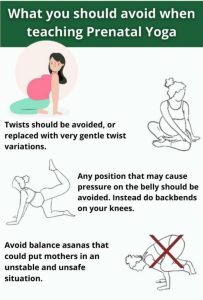What are the key safety considerations in teaching prenatal yoga?
teaching prenatal yoga
In a prenatal yoga class, women will practice breathing exercises and stretch into poses that are gentle enough to be safe for their growing babies. They’ll use props like blankets, blocks and cushions to support their changing bodies. Pregnant women are encouraged to listen to their bodies and stop the pose if it is uncomfortable or painful. They may also be asked to focus on the breath or repeat a mantra or phrase for self-awareness and inner calm.
Because the body is preparing for childbirth, it releases a hormone that loosens muscles, ligaments and tendons, which can lead to injuries in women who aren’t used to exercise. Pregnancy yoga classes are often slower than traditional classes and incorporate more props to help pregnant students. Pregnant students are also likely to be more tired than non-pregnant students, so instructors must keep that in mind when planning their classes.

Taking general precautions like drinking lots of water and not pushing yourself too hard is important, but it’s essential for Prenatal Yoga Teacher Training instructors to understand the specific changes that happen in a woman’s body during pregnancy and how those change her posture. Instructors will be taught how to make sure their classes are safe for pregnant participants, and they’ll learn what precautions to take in the event of a complication.
What are the key safety considerations in teaching prenatal yoga?
For instance, the uterus is heavier in the second trimester, which increases the risk of falls in poses such as handstand or crow. Some teachers will choose to avoid inversions at all during pregnancy, while others will allow them if the student is experienced with inversions and has been doing them regularly prior to her pregnancy. Poses that involve lying on the stomach should be avoided in the second trimester, as they can cause or exacerbate diastis recti, which is when the abdominal muscles separate.
A qualified, certified yoga instructor is key for a safe and effective prenatal yoga class. This means that it’s important for pregnant students to research their instructors before they enroll in a class, particularly online or at a studio that doesn’t require certification. They should be able to find information about the instructor’s qualifications and background on websites such as Yoga Alliance, which provides an online directory of instructors.
Prenatal Yoga is a beautiful way for women to connect with their bodies and the spirit within them. NETA’s prenatal yoga training will give you the tools and confidence to create life-changing classes that are themed and sequenced just for your pregnant students!